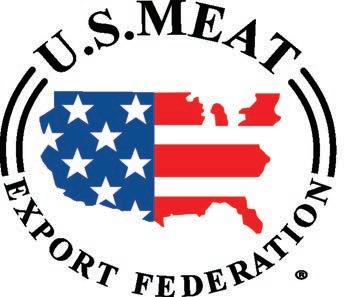
1 minute read
International markets maximize value of beef for U.S. producers
Global demand for high-quality protein is soaring and Idaho Beef Council (IBC) is working closely with the U.S. Meat Export Federation (USMEF) and regional partners to increase U.S. beef’s share of that growth.

Advertisement
RECORD-SETTING GROWTH
Most of us have heard that exporting adds value to the U.S. beef industry, but do you know how it adds value to the cattle you sell? Beef exports add value first by simply increasing the volume of beef sold.
In 2021, U.S. beef and variety meat exports were record-large at 3.17 billion pounds, while export value soared to a record $10.6 billion. Global demand for U.S. beef grew even stronger in 2022, with exports through November at a record level, nearing $11 billion and expected to approach $12 billion when full-year data is available.
The U.S. exports roughly 15% of its total beef production and about 12% of beef muscle cuts. Exports are an excellent complement to our robust domestic market, especially when exporting underutilized cuts and variety meat. Exports of beef variety meat, including tongues, livers, tripe, hearts, kidneys, lips, etc., totaled $1.1 billion in 2021 and had already topped $1.15 billion through November 2022, con - tributing significantly to the value of every animal harvested.
“Exporting adds about $452 per head for each producer here in Idaho. That is 13% year over year and more than double what it was a decade ago in 2012. We also provide a lot of protein exports and nutrition overseas and at the same time help utilize the whole carcass of that animal more fully,” explains Cevin Jones, U.S. Meat Export Federation (USMEF) Past Chair and Idaho cattle rancher.
The U.S. exports beef to more than 100 countries, and the top export destinations are South Korea, Japan, China/ Hong Kong, Mexico, Canada and Taiwan. While 2022 export growth was largely driven by the major Asian markets, demand for U.S. beef also strengthened significantly in the Caribbean, Middle East, Southeast Asia and Colombia.
CONTINUED, PAGE 36









